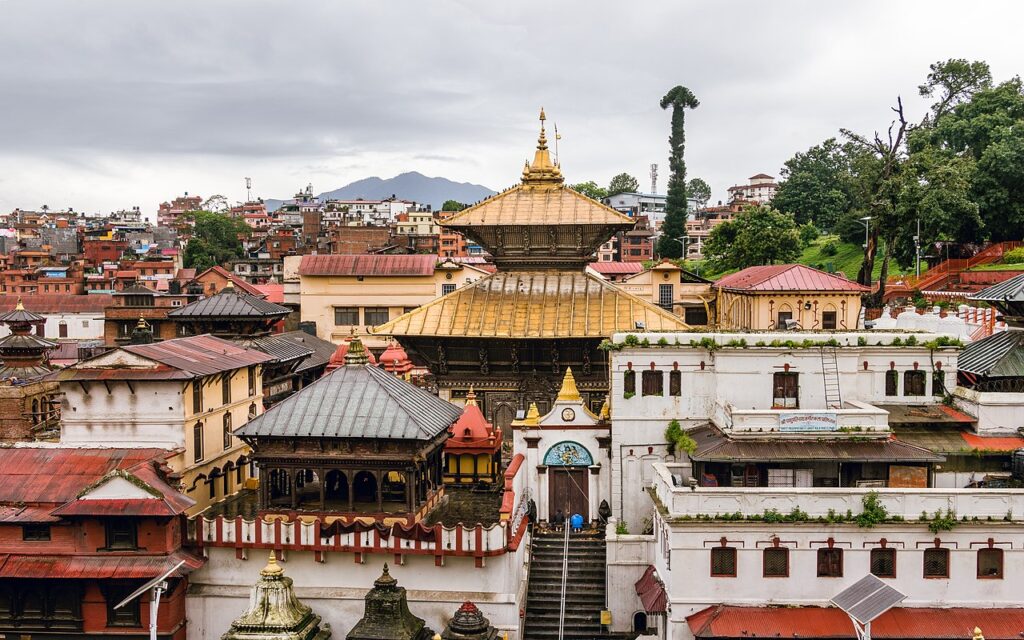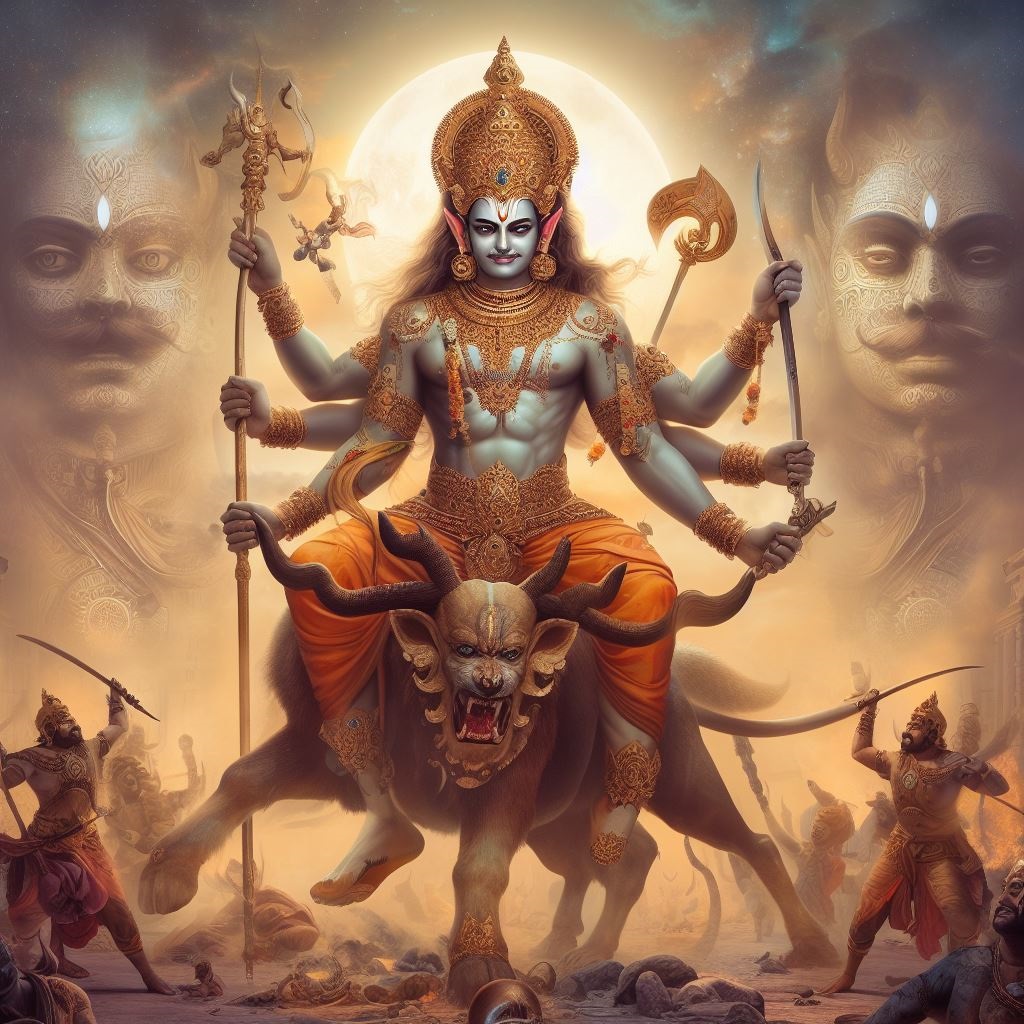Kaliyug stands as a unique epoch in the vast tapestry of Hindu cosmology, an age that resonates with both spiritual significance and profound challenges. Often referred to as the “Age of Vice” or the “Iron Age,” Kaliyug is the last of the four stages the world goes through as part of the cycle of Yugas, as per Hindu philosophy.
In this blog, we embark on a captivating journey to decipher the layers of Kaliyug, exploring its meaning, prophecies, and beliefs that have echoed through millennia. As we delve deep into the annals of ancient scriptures and spiritual wisdom, we unravel the essence of this age, marked by moral degradation, materialism, and spiritual trials.
Our exploration takes us from the very inception of Kaliyug, believed to have dawned with Lord Krishna’s departure, to its prophesied end, a time of upheaval and spiritual renewal. We examine the profound symbolism that underpins this epoch, understanding how it reflects the eternal struggle between virtue and vice, light and darkness.
Additionally, we venture into the sacred grounds of Pashupatinath, where unique beliefs about the end of Kaliyug thrive, offering solace and spiritual guidance to countless seekers. We decode the signs and indicators that are believed to herald the end of this age, painting a vivid picture of the cosmic events that shape our understanding of time.
As we navigate the challenges posed by Kaliyug, we discover the resilience of the human spirit, the strength found in spiritual practices, and the eternal quest for enlightenment amidst adversity. Join us in this enlightening odyssey, as we decipher the enigma of Kaliyug and unearth the timeless teachings it holds for those seeking spiritual evolution in today’s world.
What is Kaliyug? or Kaliyug Meaning
Kaliyug, often translated as the “Age of Vice” or the “Iron Age,” holds a significant place in Hindu cosmology. It is the last of the four stages that the world goes through as part of the Yuga cycle, according to Hindu philosophy. Each Yuga represents a different level of moral and spiritual development, and Kaliyug is characterized by a decline in righteousness and a rise in vice.
In the context of Kaliyug, the word “Kali” refers to darkness, ignorance, and discord. This age is believed to be marked by an increase in materialism, greed, selfishness, and moral degradation. According to Hindu scriptures, Kaliyug began with Lord Krishna’s departure from the Earth, approximately 5,000 years ago. It is said to last for 432,000 years, with a vast majority of that time already passed.
In Kaliyug, the spiritual and moral values of society deteriorate, leading to chaos, conflict, and suffering. Virtues like honesty, kindness, and humility are overshadowed by dishonesty, cruelty, and arrogance. However, amidst this darkness, the scriptures also suggest that there is a unique opportunity for spiritual progress. It is believed that in Kaliyug, the path to liberation (moksha) is through devotion (bhakti) and chanting the divine names of God.
Kaliyug is not merely a chronological time period but also a metaphorical representation of the inner struggles of humanity. It symbolizes the constant battle between good and evil, the eternal quest for spiritual enlightenment amid challenging circumstances. Understanding Kaliyug provides valuable insights into the complexities of human nature and the importance of spiritual practices in navigating the challenges of the modern world.

Kaliyug Start and Kaliyug End
In Hindu cosmology, understanding the commencement and conclusion of Kaliyug is essential to grasp the cyclical nature of time. Kaliyug, the fourth and final age in the Yuga cycle, is believed to have started approximately 5,000 years ago with the departure of Lord Krishna. As per ancient scriptures, Kaliyug is slated to last for 432,000 years, making it the shortest but most tumultuous Yuga.
The end of Kaliyug signifies a period of cleansing and renewal, where the universe undergoes a cyclical transformation. However, pinpointing the exact end date is a topic of spiritual contemplation and interpretation within the Hindu tradition. Some believe it will be followed by a new Satyug, characterized by virtue and enlightenment, restarting the Yuga cycle.
Navigating the intricacies of Kaliyug’s timeline offers profound insights into Hindu philosophy and spirituality. It reminds us of the transient nature of time, emphasizing the importance of virtue and spiritual growth amidst life’s challenges.

what is the belief at pashupatinath about the end of kaliyug?
Nestled in the heart of Nepal, the sacred Pashupatinath Temple carries profound beliefs about the end of Kaliyug, the age of darkness in Hindu cosmology. According to Hindu scriptures and the beliefs upheld at Pashupatinath, it is predicted that Lord Shiva, the divine force, will incarnate as Kalki, the warrior form of Vishnu, at the conclusion of Kaliyug.
This divine incarnation signifies the cleansing of the world, eradicating evil and restoring righteousness. Pashupatinath Temple, revered as one of the holiest Hindu shrines, becomes a focal point for devotees anticipating this cosmic event. It is believed that Lord Shiva, the presiding deity of the temple, will play a pivotal role in ushering in a new era, the beginning of Satyug, the age of truth and enlightenment.
Devotees from around the world visit Pashupatinath to seek spiritual solace and witness the divine presence believed to reside there. The belief in the temple’s sanctity during the end of Kaliyug reflects a profound faith in the cyclical nature of time and the eternal cosmic balance.
Signs and Indicators of Kaliyug
In the vast tapestry of Hindu cosmology, Kaliyug stands as an epoch of moral and spiritual decline, marked by various signs and indicators that shape the understanding of this age. While interpretations may vary, several common elements provide insights into the nature of Kaliyug:
Dharma Erosion: One of the most prominent signs is the gradual erosion of dharma, or righteousness. Moral values and ethical principles decline, leading to a skewed sense of justice and virtue.
Lack of Truth: In Kaliyug, truth becomes increasingly elusive. Deception and falsehoods prevail, making it challenging to discern fact from fiction.
Materialism: The age of Kali witnesses an intense focus on materialism and consumerism, often overshadowing spiritual pursuits. People become more driven by desires for wealth, power, and sensory pleasures.
Conflict and Discord: Kaliyug is marked by escalating conflicts and societal discord. It’s a time of wars, disputes, and general unrest.
Moral Decay: A decline in moral conduct is observed, with widespread promiscuity, dishonesty, and a lack of empathy.
Shortened Lifespans: While human lifespans have decreased over the ages, Kaliyug is associated with the shortest lifespan of all the yugas.
Religious Hypocrisy: Hypocrisy and a superficial approach to religious practices often prevail, overshadowing genuine spirituality.
Loss of Wisdom: As Kaliyug progresses, wisdom and knowledge decline, and intellectual abilities wane.
Environmental Degradation: The environment suffers as people exploit natural resources without concern for sustainability.
Understanding these signs and indicators offers a lens through which we can comprehend the challenges and complexities of Kaliyug. It reminds us of the eternal struggle between light and darkness and the need for spiritual awakening in a world mired in chaos.
Navigating the Challenges in Kaliyug
In the face of Kaliyug’s myriad challenges, individuals seek solace and meaning, navigating this age with spiritual resilience and unwavering faith. Here’s how one can approach the trials of Kaliyug:
Inner Strength: Cultivating inner strength through meditation, yoga, and mindfulness practices helps individuals remain centered amidst external chaos.
Satsang and Community: Engaging in satsang, spiritual gatherings, and connecting with like-minded souls provide a supportive community, fostering spiritual growth.
Dharma and Righteousness: Upholding dharma, or moral righteousness, becomes paramount. Living a virtuous life and adhering to ethical principles can counterbalance the moral decay of the age.
Scriptural Wisdom: Delving into sacred texts and ancient scriptures offers profound insights and guidance, serving as a beacon in the darkness of Kaliyug.
Service to Others: Selfless service (seva) and acts of kindness uplift both the giver and the receiver, fostering a sense of purpose and compassion in a challenging world.
Devotion and Bhakti: Deepening one’s devotion through prayer, chanting, and devotional practices fosters a profound connection with the divine, offering solace and strength.
Resilience in Adversity: Learning to face adversity with resilience and equanimity, understanding that challenges are inherent in Kaliyug’s nature, can lead to spiritual evolution.
Mindfulness in Actions: Practicing mindfulness in everyday actions promotes awareness, helping individuals make conscious choices aligned with spiritual values.
Simplicity and Detachment: Embracing simplicity and detachment from material pursuits lessen the impact of materialism, allowing individuals to focus on inner growth.
Navigating the challenges of Kaliyug requires a blend of spiritual wisdom, inner strength, and unwavering faith. By embracing these practices, individuals can find meaning and purpose amidst the complexities of this age.
Embracing Spiritual Evolution in the Midst of Kaliyug
In the heart of Kaliyug’s tumultuous era, the pursuit of spiritual evolution stands as a beacon of hope and transformation. Embracing this evolution amidst the challenges requires a deliberate and conscious effort. Here’s how individuals can embark on this profound journey:
Self-Reflection and Awareness: Initiating spiritual growth begins with self-reflection and heightened self-awareness. Understanding one’s strengths and weaknesses enables targeted personal development.
Study of Scriptures: Delving into ancient scriptures and philosophical texts provides timeless wisdom. Studying the teachings of sages and enlightened masters offers invaluable insights into the nature of reality and the self.
Meditation and Mindfulness: Regular meditation and mindfulness practices foster inner peace and mental clarity. These practices help individuals detach from the chaos of Kaliyug, finding solace within.
Yoga and Pranayama: The practice of yoga asanas and pranayama techniques not only enhances physical health but also balances the vital life force (prana), harmonizing the body, mind, and spirit.
Seva (Selfless Service): Engaging in seva, or selfless service to others, purifies the heart and instills a sense of compassion. Acts of kindness and service elevate the spirit, promoting spiritual evolution.
Cultivation of Virtues: Upholding virtues such as truthfulness, patience, and humility strengthens character. Practicing these virtues in daily life aligns individuals with spiritual principles.
Guru’s Guidance: Seeking the guidance of a knowledgeable guru or spiritual teacher provides direction and support. A guru imparts spiritual wisdom, guiding disciples on their evolutionary path.
Forgiveness and Letting Go: Forgiving past grievances and letting go of resentment liberates the soul. Forgiveness is a powerful tool for personal growth and spiritual advancement.
Embracing spiritual evolution in the midst of Kaliyug’s challenges is not merely a pursuit but a transformative lifestyle. By incorporating these practices, individuals can navigate the complexities of this age, leading to profound inner growth and spiritual enlightenment.




I’m truly impressed by your deep insights and superb ability to convey information. Your expertise shines through in every piece you write. It’s evident that you put a lot of effort into researching your topics, and this effort is well-appreciated. Thanks for providing this valuable knowledge. Keep up the great work! Learn more about [OnlyFans Marketing](https://elevenviral.com/onlyfans-marketing-growth-service/) https://elevenviral.com/onlyfans-marketing-growth-service/